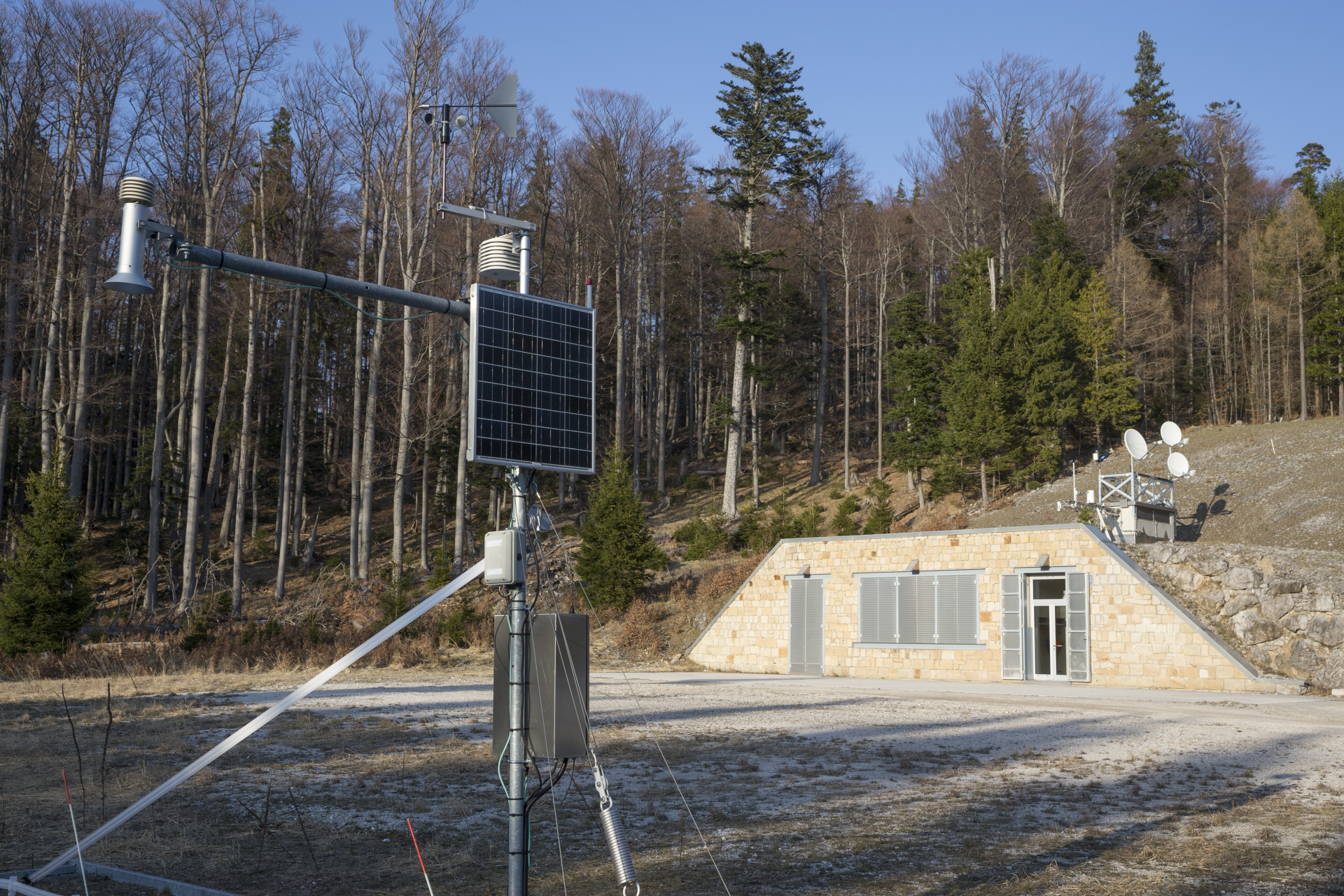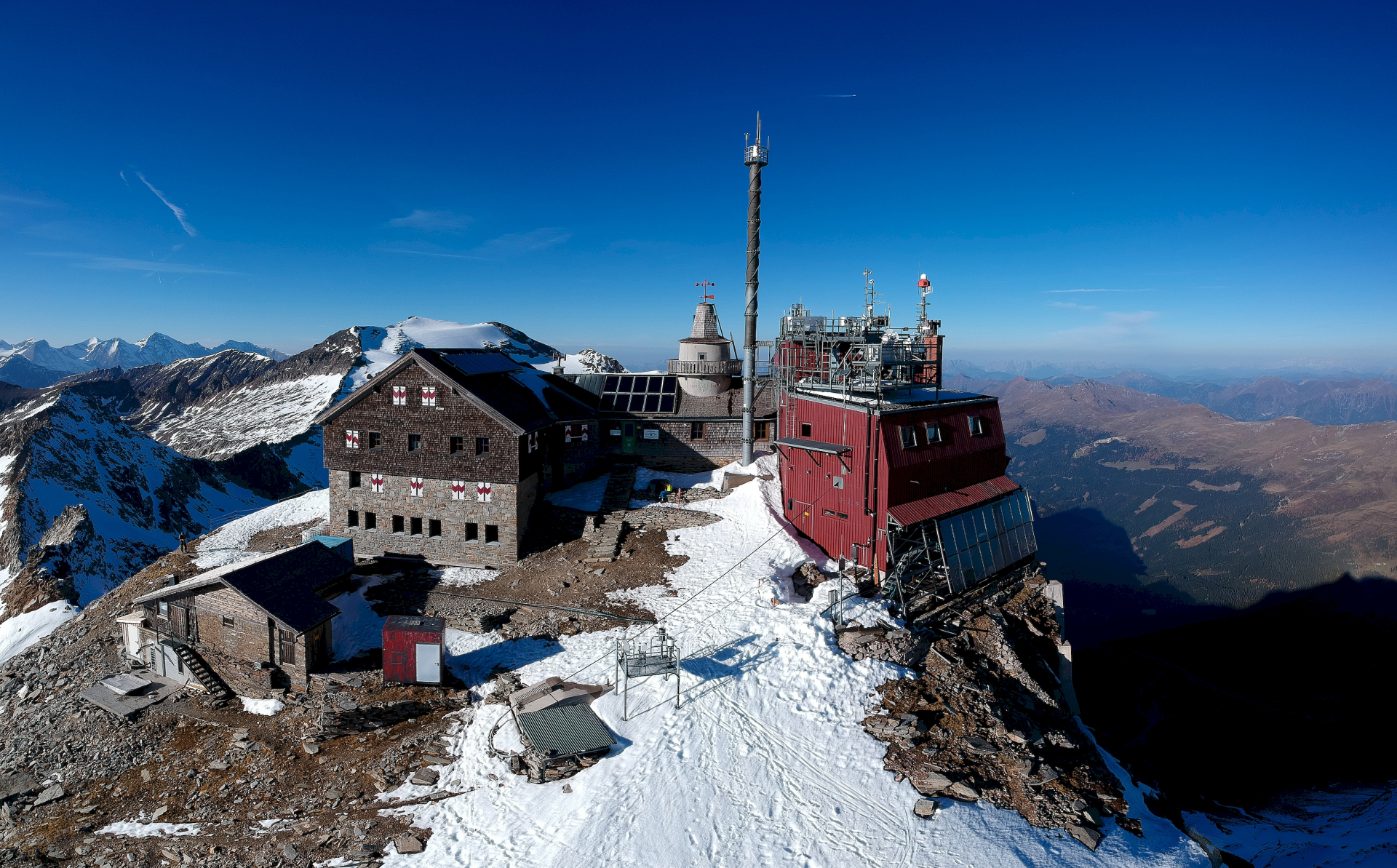Observatories
GeoSphere Austria operates two observatories: the meteorological Sonnblick Observatory in the Hohe Tauern at 3,106 m above sea level and the geophysical Conrad Observatory on the Trafelberg at 1,088 m, about 50 km southwest of Vienna, which is almost entirely located underground.
Various parameters are measured and scientific experiments are carried out at the two large observatories of GeoSphere Austria, the Conrad Observatory and the Sonnblick Observatory. The Sonnblick Observatory is a meteorological observatory that monitors the weather and climate. The Conrad Observatory comprises two main areas: the seismic-gravimetric observatory (opened in 2002), and the geomagnetic observatory (since 2014).
GeoSphere Austria’ s Conrad Observatory is a geophysical observatory with several observation and research facilities. It continuously monitors global earthquakes, Earth tides, magnetic field fluctuations, space weather, geodetic parameters and meteorological data, among other things. Accurate observations of all these variations are essential for understanding natural disasters such as earthquakes, volcanic eruptions and solar storms and are crucial for developing strategies to minimise risk and protect affected communities. Research in all these areas is also being conducted with international partners.
In addition to the observation instrumentation, several research and calibration facilities are installed at the Conrad Observatory. These include seismometers and magnetic sensors, reference stations and laboratories for materials research as well as magnetism, and attract numerous researchers and research institutions.
The Conrad Observatory is located approximately 50 km southwest of Vienna in a nature reserve on the Trafelberg (Lower Austria), just over 1,000 metres above sea level. The observatory is almost entirely underground and thus guarantees, among other things, constant temperature conditions for all measurement techniques used. The remoteness of the location is ideal for geophysical investigations, as the site is characterised by extremely low background noise, both natural and technical. The observatory has its own uninterruptible power supply and is connected to GeoSphere Austria in Vienna via data lines. Numerous processes and experiments can be controlled remotely.
The observatory is a member of the most important international networks in its research disciplines such as IRIS (seismology) and INTERMAGNET (magnetism). The data quality is rated as excellent and the data is used by world-renowned institutions such as the United States National Oceanic and Atmospheric Administration (NOAA) and the European Space Agency (ESA). Numerous research groups use the data and the observatory’ s infrastructure, including leading research groups in the fields of space physics, quantum physics and geophysics. All of the observatory’ s data is freely available and can be accessed in real time. In particular, data on risk minimisation and the protection of affected communities is also made available automatically on data portals.
The range of supported measurement methods, the instrumentation and the layout of the underground facilities and laboratories make the observatory a unique research and development centre.
The Sonnblick Observatory makes an important contribution to Austrian climate research. With over 130 years of climate time series and a very broad-based atmospheric measurement programme, the changes in the Alpine climate can be shown. The measurements make it easier to understand the causes of the safely changing climate. In addition to climate research, the Sonnblick Observatory serves as a research station for research related to the atmosphere, cryosphere as well as biosphere. The research focus is on changes in the high alpine ecosystem and on aerosol-cloud-climate-interactions. The observatory is not only used by GeoSphere Austria, but is also open to researchers from all over the world for research projects.
The extensive monitoring programme forms the basis for the research. The Sonnblick Observatory provides quantitative, high-quality data sets in the field of climate, environmental and ecosystem research, which are freely accessible in the observatory’ s database or the corresponding databases of the World Meteorological Organisation (WMO).
The establishment of the Sonnblick Observatory in 1886 helped to revolutionise meteorology by providing important foundations for our understanding of the atmosphere through measurement data obtained at the observatory. Even today, providing high-quality measurements for science is a constant focus of the observatory. The existing time series are unique and of great scientific and social value. With the data and research of the Sonnblick Observatory, GeoSphere Austria contributes to the fulfillment of international treaties in the field of climate and environment, but also enables other important fundamental research.
Data collection at the Sonnblick Observatory is very complex and time-consuming. We demand a high level of data quality and quantity. To achieve this, each data set must be checked manually and promptly in accordance with international standards. The data collection is the contribution of several institutions that are significantly involved in the research and monitoring operations at the Sonnblick Observatory. A large number of people benefit from the data collected. These range from private individuals and scientific staff to universities and other research institutions. Due to the wide range of different parameters, the projects for which the data are used are also very diverse.
The Sonnblick Observatory is available to anyone for research projects, can be used in a variety of ways and, with 24/7 operation, projects can also be carried out remotely with the support of the observatory team.
The Sonnblick Observatory on the main alpine ridge of the Austrian Alps is built in a unique location. The observatory is based in high alpine terrain, protected by the Hohe Tauern National Park, in an almost emission-free environment. This is unique at this altitude and highly appreciated by scientists. The Sonnblick Observatory also has the longest climatological time series in the world at this altitude.


